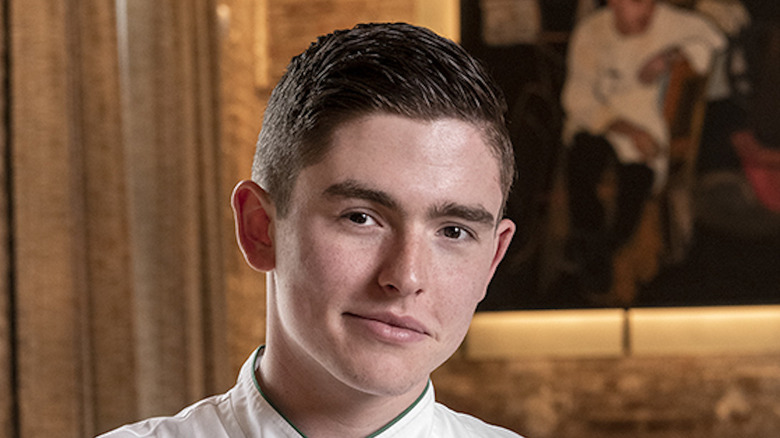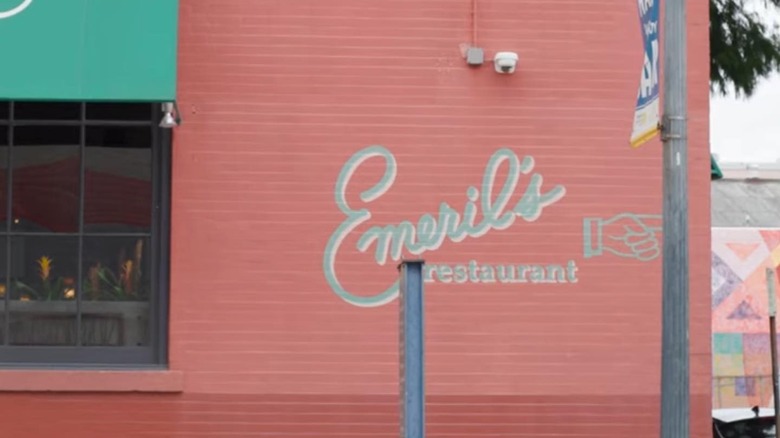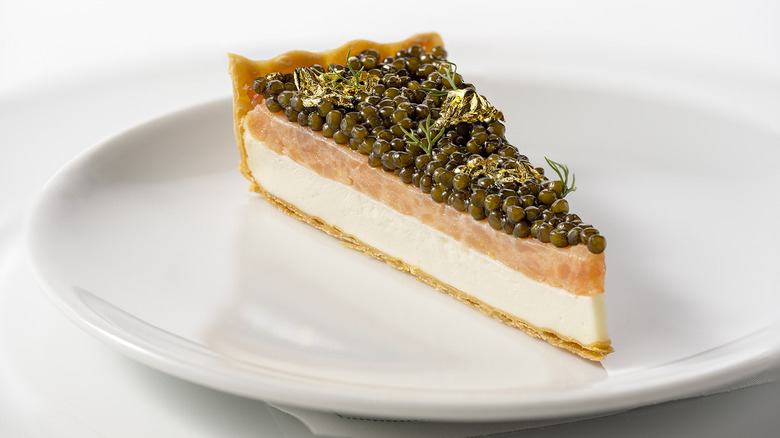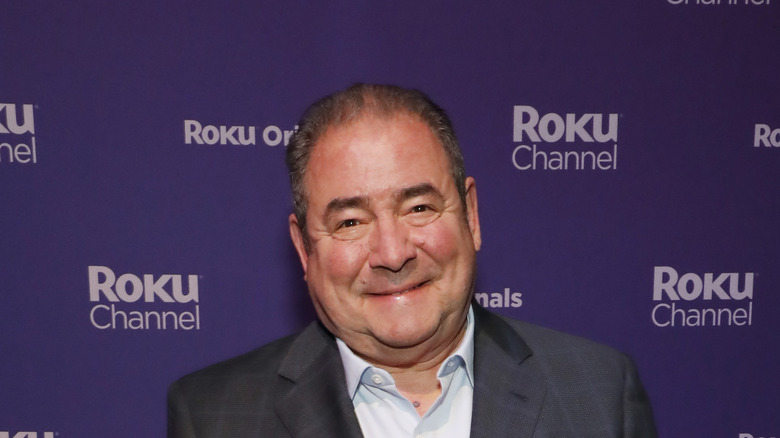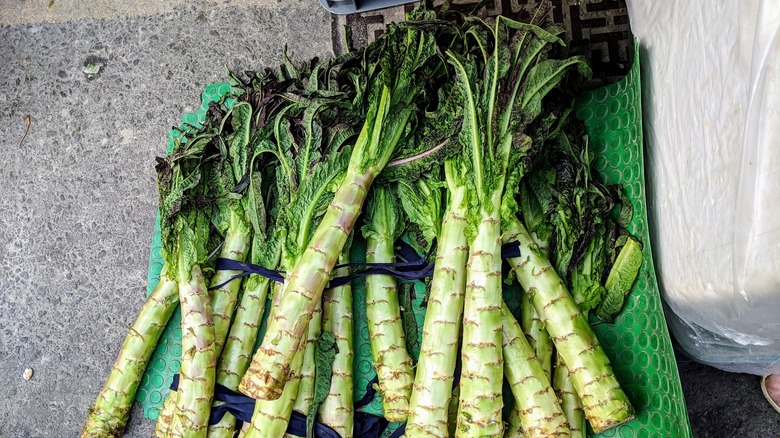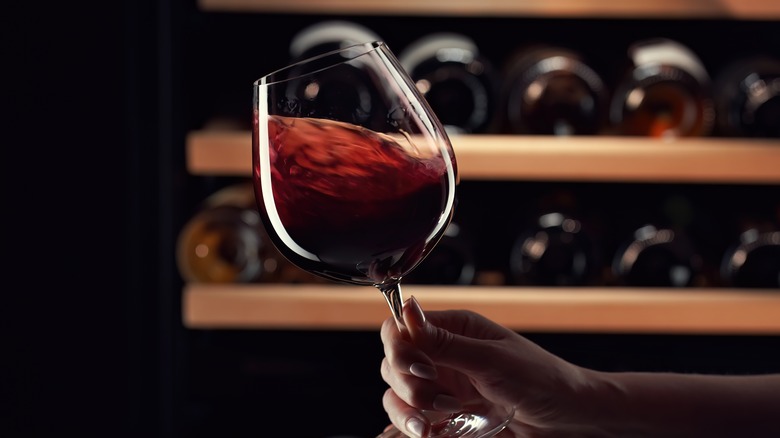EJ Lagasse Brings Flagship Emeril's Location Into The Modern Age - Exclusive Interview
It is not unusual to have a restaurant run as a family business for generations, but it's less common for that restaurant to have a world-renowned name. Emeril's in New Orleans has been around for over 30 years. In that time, it has garnered a reputation for quality and continued innovation in the culinary arts.
Now, the torch of this flagship location of Chef Emeril Lagasse is being passed to a new generation. Chef EJ Lagasse has taken over the helm of Emeril's and is seeing it through a complete revamp. The interior is getting a full redesign, and Lagasse is utilizing his incredible skill and modern techniques to bring new and classic dishes to the menu. Lagasse is a graduate of Johnson & Wales and has worked at Michelin-starred restaurants before returning to Emeril's. We got the chance to speak with him about the upcoming reopening of the restaurant and what it means to him to be a part of this continued legacy.
Changing it up
What does it mean to you to be reopening the flagship Emeril location?
It's the best experience of my life so far. It's been fantastic. It means a lot from a family perspective, from a personal career perspective, from being excited about the city of New Orleans. There's a lot of things for me that we can be excited right now. We've got a new space, we've really done a lot to it, and I'm excited for people to see it, but it's a lot of legacy in that building. A lot of people have been in that building before myself and my team, and now we get to pay our respects to them as we reopen.
You've changed up some of the classic dishes such as the Potato Alexa. What new elements are you hoping to bring to the dish?
There's been so many variations of that dish over time. It was created for Billy Joel's daughter, Alexa Joel, back in the day. Billy would come through the restaurant with his daughter and she would want one thing. She would ask one thing from my dad, and that was potatoes, truffles, and cheese. He made it happen then, and it turned into a side dish on the menu, and then became an appetizer on the menu. It's been in a couple of places around the menu. I put it smack dab in the middle of the tasting menu. It's a great bridge course in terms of thinking about it from a restaurant dynamic. It's a great bridge course between the early part of the menu and the latter part of the menu. It's the first really rich dish that you get, but it's a truffle butter sauce.
We've made this reduction of truffle juice where we get the jus de truffe that we cook down into the butter, and we're not using pan truffles, or truffle peeling, or truffle paste. We are taking whole black truffles and running our blades through them until we get this really fine mince on the truffles, and then we add that and emulsify it into the butter sauce. The potato itself is very simple. It's a turned down steamed potato. We hollow out the inside of it. We fill it with a mushroom emulsion that we season with black truffle, more of that minced black truffle. On top of that, we lay this Parmesan Mornay, which is a light, roux-thickened Parmesan cheese sauce. We coat the exterior of the potato with really fine sliced chives around, because I really like incorporating the alum flavor into the dish.
It cuts through some of the butter really nicely, and that's a little different than it was when it was a side dish on the menu. That was almost a mashed potato with egg yolk piped in it on top of some truffles. The original version, which is more what mine is based on, was a peeled potato split down the middle to where it's sitting there open and filled with truffles and cheese. It's more similar to the original than maybe the 2005 version, which was that piped one that I was talking about. This is more '96, '97 range, which is really nice. We found a lot of them in the menu archives when I was looking back to do research on the dishes.
Revamp and reopen
In addition to upgrading the menu and those sorts of changes, what other changes can we expect to see at the restaurant?
It really is a complete rebuild. Walls have been taken down, new walls have been put up, new glass has been put up. It's a new stove, it's new pans, it's the whole nine yards. It's everything new. When they did the Emeril's renovation in 1999, they took the restaurant that had been opened in '90 to that contemporary feel, and I feel that we're doing that again. We're taking Emeril's and bringing it to today, and bringing it to a contemporary place from an aesthetic standpoint.
I feel that when I took over as chef patron about a year and a half ago, I began the start of the very long journey of trying to progress the food to match it to that contemporary feel and space. I wanted the dining room to feel like you were in New Orleans but have this very elegant and refined new look to it. It's not just putting a can of paint on the walls or something like that. We changed things architecturally in the building to make a difference in the ambiance.
What are you trying to achieve with the new menu?
We have two menus. There's the classic and the seasonal menu. With the classic menu, it's my take on some of the greatest hits of the restaurant's past. It's paying respect. It's tipping our toes, if you will, to the people that have been in there before, the people that created these dishes before — mainly, my father — and utilizing new techniques, contemporary techniques to present dishes that have been around since 1990. On the flip side, with the seasonal menu, it's a hyper focus on the seasonality of produce here in the state of Louisiana, and a focus on finding and sourcing the best of the best for our guests.
It's been the goal of the restaurant since March 25th, 1990, and it's the goal of the restaurant to this day. I'm not doing anything different than my dad was doing in 1990 in that regard. We're not doing anything different than we were in 2008. We're doing things the way we've always done them, sticking to our roots, trying to do what we do best on a day-to-day basis. That is trying to source these ingredients so that we can put together a technique driven example of this Louisiana food for the people that give us the time of day and come to eat in our dining room.
Going straight to the source
You've mentioned that procuring those local ingredients is so important. Why is it that important to you to use those local foods and those local suppliers?
Nobody loses in the situation. I get the best produce, and the local farmers, genuinely from a monetary standpoint, from a business standpoint, are supported. They're very small, independent farms, less than an acre large, most of them that I'm using. I like supporting the young people that are trying to do things in a new way or something. I can relate to them a little bit in that fashion. If you go beyond that, they're experienced farmers that we're using. They know what they're doing. I don't have to do anything. They're giving me the best cauliflower you've ever seen, because they've been doing it for 40 years. They're good at it. It's what they do. I don't have to worry about the quality of the produce dropping at all.
It also supports the state. It supports the Gulf Coast region. We're using things from Mississippi, Georgia, Alabama, and Texas as well. It's not just about Louisiana, but it's about supporting the Gulf Coast region when it comes to our produce. We have the best seafood in the world at our doorstep. It's right there. We'd be silly not to use it. That's why so many people use it, even [outside of] New Orleans. It's important from a quality standpoint, it's important from a supporting the community standpoint, and it's important for me, because I have a personal connection to some of these farmers.
Following in the footsteps
How do you approach making your own name for yourself while continuing your father's legacy?
My father and I are very similar in personality and a lot of things, but we're also very different. As the restaurant continues to evolve and move forward, I'll find certain things that put me on a different end of the spectrum than my father's when it comes to certain things. I don't know exactly what those things are yet. It's very early in my career, but we have the same fundamentals and the same goals. That's what makes us a strong team — and the ability for us to work together so well — he trusts me and I trust him, because we've been talking about doing what we're doing for many years. I didn't just show up in New Orleans and go, "I'm going to take you over to the restaurant."
We had some preemptive conversations for quite a long time about what we wanted to do and what we wanted to accomplish, and that was bring Emeril's back to its roots, back to its fundamentals. We had a lot of time over COVID to think about it. We're in a way different place now than we were when we reopened after that. I've been here about a year and a half, and as we continue to work together, I'll leave it to our guests to decide where we differ. I like to focus a bit more on where we're similar. It is a family business, after all.
Seafood is featured prominently on your menu. What is the biggest mistake you find that people make when cooking with it?
Overcooking it. That's the biggest thing. A chef mentor that I now very dearly am able to call a friend, Chef [Eric] Ripert of La Bernardin in New York City. the man can cook some fish or cook seafood in general. It's like a temple of seafood up there. In my time there, I thought I knew about fish. I knew nothing about fish. [I was there] for a long time, and I still know nothing about fish. There's so much to know about fish and the biggest thing to tell people is don't overcook it.
We need to wash it. We use cake testers, these little metal sticks. [They're like] toothpicks in their size, but they're metal, to rest into fish momentarily, remove it, and check it against one's skin, seeing the temperature. If it's hot when you pull it out of that fish, I've got bad news for you: you've overcooked it. You want it to be about the temperature of your skin. You want to barely be able to feel it. Fish is such a delicate thing. 20 seconds is a lifetime when it comes to fish. Watch it and use your burners. Use the knobs. Turn the flame down. Turn it up. Be in control of the pan when you're cooking fish.
What to stock your kitchen with
What ingredient do you always have stocked in your pantry [at home]?
I've always got Portuguese olive oil. That's number one. If I didn't, my grandmother would be rolling in her grave. I love having red beans around. I like to soak my red beans. Mondays, I'm off. It's tradition here in New Orleans to make red beans and rice, and I find myself doing that quite frequently, unless I want to go get one in the city that's way better than mine. So many people to do it 10 times better. I'm still working on mine. I keep red beans around. I'm a big fan of Calabrian chilies. I put them in about everything when I'm eating at home, whether it be pasta, or in some rice or if I'm eating a piece of meat or something like that. Those are my go-tos right now.
Is there an ingredient you find that is underrated?
Yes — celtuce. It's basically the root of celery. It's very similar to that. It's got that fibrous texture to it as well. It's fantastic. It's one of the great vegetables that you don't really see a lot of. Chinese lettuce is another name for it, or very similar to it. It has the flavor like the hearts of lettuce, and it's really nice when it's cooked in a pan or anything like that. We're working on having some of our local farmers grow some for us now, so I can use it in the spring.
What tool do you think every kitchen needs?
A spoon. That's the big one, the really nice tasting spoon. Taste your food. Always be tasting your spoon. Professionally, I use the smaller Gray Kunz spoons from JB Prince. Those are the go-tos for us.
Food and drink on the table
Wine is clearly an important aspect of the restaurant and is close to your family's heart. What kind of wines are we going to expect to see at the ready?
The wine list at the restaurant has been expansive for many years. It's been a grand award-winning wine list since 1999. My father has always been into the wine. He still is. He's hyper-involved in the wine program to this day. In Louisiana and New Orleans, a lot of people drink a lot of red and white Burgundy. We're going to be seeing a lot of that. We've invested a bit in the Bordeaux category as well, and specifically in the first growth categories when it comes to trying to build and maintain verticals that we have in the restaurant to this day. Dad's really involved in the wine program and still does a lot of the buying personally.
With the holidays coming up, what are some dishes that we'll find on your table?
I don't know if I'll be home for any of the holidays, being open and being in the restaurant, but if I do shake free at one moment, I'd love to have my grandmother's Recheio, the Portuguese stuffing. It actually makes an appearance on the menu, so even if I don't get home, I'll be able to hopefully bag some, but it's in the quail dish on the seasonal menu. It's a Portuguese stuffing. It's milk soaked like the innards of French bread, with onions and bell pepper, and some dry peppers like cayenne and things like that, cooked down with Portuguese sausage, chouriço. It's really fantastic. It's one of the favorites. We do small portions of it at the restaurant. We'll [have] a massive portion of it at the house.
Is there anything else that we should know about the reopening of the restaurant?
I'm excited as anything. I can't wait to share with everyone and hope to do New Orleans, and our guests that have been coming to the restaurant for 33 years, proud.
Emeril's New Orleans is now open for dining. For reservations and additional information, please visit Emeril's restaurant website.
This interview has been edited for clarity.
